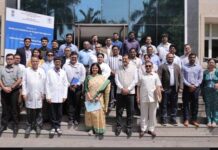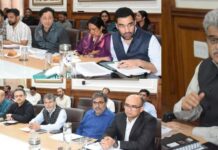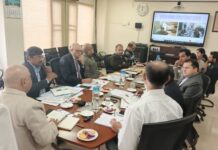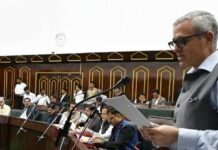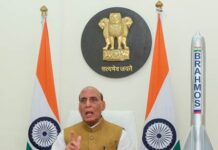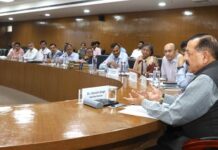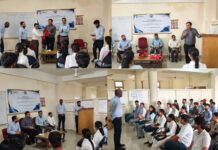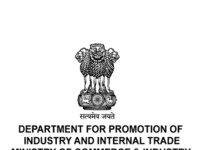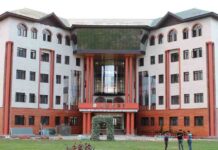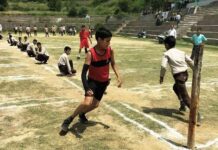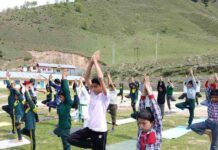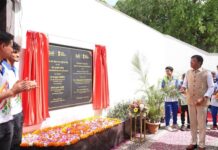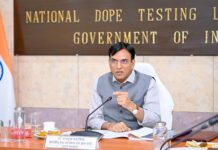26 DEC,Delhi: Major Achievements during the year 2022
- Six Doppler Weather Radars (DWRs) have been commissioned at Chennai, Leh, Ayanagar (Delhi), Mumbai, Surkanda Devi (Uttarakhand) & Banihal Top (J&K) in 2022, taking the total number of DWRs to 35.
- The annual average cyclone track forecast errors in 2021 have been 60 km, 93 km and 164 km respectively for 24, 48 and 72 hrs against the past five-year average error of 77, 117 and 159 km based on data of 2016-2020.
- There has been 40-50% improvement in Severe Weather (cyclone, heavy rainfall, heat wave, cold wave, thunderstorms, fog) forecast with lead period of five days during last five years.
- The number of Nowcast stations has increased from 1089 (2021) to 1124 (till date in 2022). The number of city forecast stations has increased from 1069 (2021) to 1181 (2022).
- Expansion of South Asia Flash Flood Guidance System (SAFFGS) for providing Flash flood guidance to Bangladesh, Bhutan, India, Nepal and Sri Lanka. SAFFGS, having a high resolution of 4×4 km and covering 30000 watersheds over Indian region is capable of issuing flash flood threat and risk for next 6 and 24 hours respectively.
- A very high-resolution (400 metre) Air Quality Early Warning System (AQEWS) integrated with A Decision Support System (DSS) for air quality has been developed showing an accuracy of 88% for predicting extreme pollution events, which is much higher than the estimates available for a similar system across the globe. This early warning system provides: (1) near real-time observations of air quality and visibility over the Delhi region and details about natural aerosols like dust (from dust storms), fire information, satellite AOD; (2) predictions of air pollutants based on the state-of-the-art atmospheric chemistry transport models; (3) warning messages, alerts, and bulletins; and (4) forecast of the contribution of non-local fire emissions to the air quality in Delhi. The, statutory body, Commission for Air Quality Management (CAQM) in the National Capital Region and the Adjoining Regions, has used AQEWS and DSS extensively.
- Agro-AWS have been installed at newly established 200 DAMUs in KVK premises. Apart from conventional sensors, these AWS are also equipped with soil moisture and soil temperature sensors. Block level agromet advisories issued for about 3126 blocks covering about360 districts of the country.
- The common alert protocol (CAP) was extensively used by State Disaster Management Authorities (SDMAs) in West Bengal, Odisha and Andhra Pradesh to disseminate the cyclone alert messages. A total of more than 6 crore bulk SMS/messages were sent in local languages alerting residents.
- Impact Based Forecasting(IBF) is being issued for all severe weather events at district and city levels with inclusion of exposure and vulnerability parameters and suggested response actions.
- The Atmospheric Research Testbed (ART) facility has been established on the ~100 acres of land at Silkheda village inSehore District of Madhya Pradesh. This facility will study important atmospheric processes particularly: a) Clouds and Convection; b) Land-Atmosphere interactions; c) Aerosol and Radiation; and d) thunderstorms, for developing and testing the parameterization schemes in weather and climate models by implementing advanced measurements of clouds, radiation, precipitation, dynamics and land-surface parameters in the core monsoon zone.
- The NCMRWF Data Assimilation (DA) system makes continuous efforts to include new observations for improving its forecast quality. In this direction, HRPT data from two Indian stations. Integral Precipitable Water (IPW) over Japan, and for the first time satellite observations from commercial satellite operators, viz SPIRE & Geo-Optics (GNSS-RO observations) have been used in assimilation from this year.
- A new merged rainfall product – Multi-Ensemble Rainfall Analysis (MERA) has been developed in research phase. This product has a spatial resolution of 4 km, and temporal resolution is of 1 hour and involves satellite rainfall products from GPM-IMERG, GSMAP, INSAT, and that of from Indian radar network.
- An experimental version of high-resolution global forecast Model (HGFM) with a horizontal resolution of 6 km has been implemented to improve the prediction of smaller-scale weather extremes. A scientific strategy is adopted by using Triangular Cubic Octahedral (Tco) grid which is very scalable After a thorough validation and performance evaluation, the model will be handed over for operational implementation to India Meteorological Department.
- New version of regional Unified Model (RA3) was implemented at 1.5km and 4km resolutions. The upgradation incorporated some new capabilities like improved microphysics with more interactive cloud-aerosol processes and the cloud generation scheme which accounts for improved entrainment at the top of the boundary layer. The lightning parameterization scheme was also re-tuned to improve the coverage and extreme weather signals for enhanced lightning forecast potential over India.
- The Electric-WRF model has been operationally implemented. Presently three different products (Lightning Flash Density, Max Reflectivity and Hourly rainfall) are being generated on an experimental basis for the kind feedback of forecasters.
- INCOIS established three Ground stations to meet the in-house operational advisory services and acquire data from AVHRR (Metop-A, NOAA-18 & NOAA-19), VIIRS (Soumi-NPP), MODIS (AQUA & TERRA) & OCM (Oceansat-2) sensors.
- Autonomous coastal water quality “Coastal Observatories” at off Kochi and Visakhapatnam along the Indian coast was established in May 2022. These observatories were deployed at approximately ~30 m water depth and ~6-8 km from the coast, housing multiple sensors for physical (temperature, salinity, depth, surface current) and water quality (dissolved oxygen, nutrients, chlorophyll, turbidity, pH, pCO2) parameters. Two cruises from West Bengal to Goa were undertaken during February 2022 to April 2022 to assess the coastal water quality.
- As a part of shoreline management study, a total of 526 numbers of shoreline change maps has been generated using the standard protocol (1:25000 scale) for the entire Indian coast. A web-based GIS application was developed as a digital version comprising of all the shoreline change maps for the Indian coast (1990-2018), which will help various coastal agencies/stake holders for better management of the coast. The shoreline change map has been released in two volumes corresponding to the East and West coasts of India. The shoreline change maps for Lakshadweep Islands has also been prepared. In addition, the coastal geomorphology and structures were mapped along with their functional and structural performance for Tamil Nadu, Puducherry, and Kerala coast.


